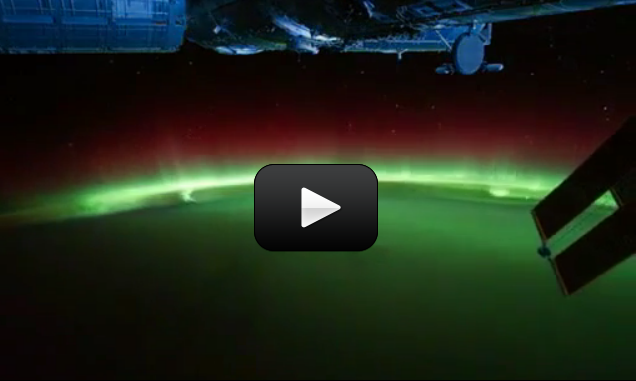Aurora, or ‘northern lights’, is the natural light display in the sky in northern regions like Canada, Alaska, and northern Eurpoean countries that have had people puzzled for centuries as to what exactly they were, and how the light displays were made. Here’s a rare view of the aurorae taken from the International Space Station:
Auroras (or aurorae) happen about 50 miles up, when solar wind hits particles in the Earth’s atmosphere. When charged particles from the solar wind hit the Earth’s magnetosphere (a magnetic field that extends far beyond the Earth’s surface and protects us from solar wind), they are funneled by the Earth’s magnetic field. When these highly charged particles from the sun hit a molecule in our atmosphere, they give off a photon. The green and brownish-red colors come from oxygen and the blue and red are from nitrogen.
In northern latitudes, the aurora borealis was named after the Roman goddess of dawn (Aurora) and the Greek name for the north wind (Boreas). In the south, the aurora australis (or the southern lights) appear anytime the northern lights are visible. This effect is also seen on other planets like Jupiter and Saturn.


The brownish band is an effect from the camera due to the contrast between the green and white and blue of the atmosphere.
What is that brown-ish band around the earth at 00:28? -Oliver
It must be cool to have something as awesome as that to have the same name as you.
So cool!
Plasma – which is an electrified gas. When the magnetic field loops from the sun snap and break, they shoot highly charged fast particles out like a fire hose, and when those particles hit the Earth’s north and south poles, they cause aurorae to form.
What is the Northern light made out of?
cool!
Actually no… I had the name first, and then got to love astronomy. 🙂
Were you named after the aurora borealis??? ~Jasmin 🙂